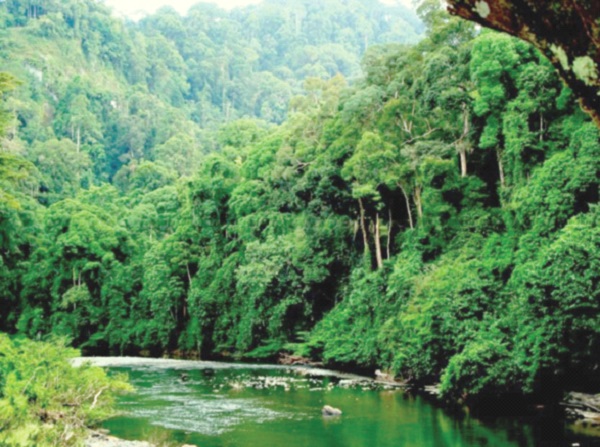Forestry sector uses Fourth Industrial Revolution processes
Published on: Friday, November 15, 2019
By: David Thien

KOTA KINABALU: Sabah’s forestry industry is already using Fourth Industrial Revolution or IR4.0 processes.
In IR4.0, there are nine technologies that are transforming the industrial production, and Additive Manufacturing is one of them.
ADVERTISEMENT
The others are Internet of Things, Cloud Computing, Cyber Security, System Integration, Simulation, Autonomous Systems, Big Data and Augmented Reality.
“Sabah’s engineered wood products like CLT or Common Laminated Timber is an example of a product from Additive Manufacturing. Others are plywood, LVL and glulam.”
This was revealed by Prof. Roger Meder of Meder Consulting who spoke on ‘Forest Industry 4.0: Sustainable Plantation Forests for Added-Value Wood Products’ at the Timber Association of Sabah (TAS) organised ‘Forest Plantation, Processing and Sabah’s Economic Future Forum’ Monday at Palace Hotel.
He said today, there are buildings as high as 20 storeys being built using engineered timber products with only the lifts (elevators) core being constructed of concrete and steel.
ADVERTISEMENT
“In Sabah, Unmanned Autonomous Vehicles (UAV) – drones are used for aerial survey of forests and aerial spraying for pest and disease control.”
“There are 25,000 hectares of E. pellita plantation in Sabah with potential for 200,000 hectares more.”
ADVERTISEMENT
In future, there would be progress like 3D scan of logs, CT is able to visualise internal defects before processing into boards, and each board is data logged by unique ID and marked with an ID every metre or so, and at any time in the future, they can provide information on the history and log from where it was harvested and processed.
There will be huge database that allows for deep-learning AI to improve processing.
For example, remote forest monitoring system uses electronic sensors to monitor forest growth in real time.
The system provides forest managers the data required for taking forest inventory by means of remote collection and uses mathematical and statistical methods to estimate forest growth, quality and health.
“Plantations require a new approach in understanding the variability – in resource assessment, quality of processing, and manage the variability to identify elite gerplasm for commercial plantation deployment; identify key site and species interactions; ensure silvicultural practice matches the down-stream processing needs; and undertake tree improvement.”
“There is no such thing as ‘magic’ silviculture. The Borneo Forestry Cooperative (BFC) has access to some of the best planting material,” he said.
The professor listed as an example of what’s possible using IR4.0 system for Sabah as it is in Brisbane Autostrad Container Port, where it’s the world’s first in operating 27 fully autonomous straddle-lift vehicles with just 3 operators per shift behind computer monitors to move 1.1 million TEU containers.
Another possible scenario is just one operator in control of an automated sawmill with few technicians and workers to ensure the right wood to the right mill; in sawmilling, gain efficiency in raw material processing with high throughput.
Prof. Roger Meder said that in Rotorua, New Zealand’s Southern Hemisphere Supermill, just “three operators controlling 15 logs per minute” could produce more than 600,000 m3 of Pinus radiata sawn timber.
In wood construction, boosting design and industrial-scale production. For furniture, optimizing highly diverse, complex production chains. In paper industry, gaining full real-time control of complex, large-scale productions, etc.
Fourth Industrial Revolution (4IR) is a term designating cyber - physical systems, which introduces radical changes in production processes compared to the current situation. It urges us to think creatively about manufacturing, distribution and customer service processes. At the same time, the future of education emphasises the immense need to look beyond these areas and to strategically utilise the “Internet of Things” or IoT to prepare the coming workforce for the challenges ahead.
What is IoT? Connected devices sending and receiving information in order to enhance their functionality. IoT is an enabler, not the end game The system must solve problem, reduce costs or increase profitability, reduce wasted time, increase efficiency, increase reliability, increase safety and Increase control and convenience.
Digitalisation is about systems of engagement and systems of insight, leveraging digitized data and processes.
Automation is a key area that must be realised to reduce dependence on foreign labour and attract high skilled, young, local talent.
Stay up-to-date by following Daily Express’s Telegram channel.
Daily Express Malaysia










